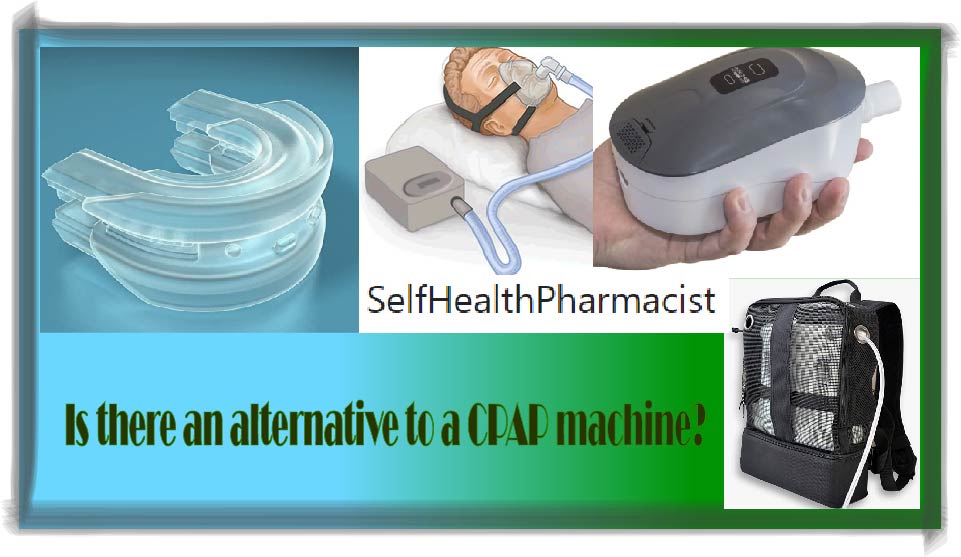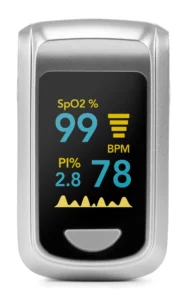As we already know from the previous article, today, the treatment of Sleep Apnea is always a CPAP therapy.
The mechanism of this method is quite simple.
During your sleep, excess positive pressure is created in the airways, which prevents them from collapsing and eliminates the main mechanism of the disease, which consists in cyclic airway occlusion at the level of the pharynx.
In the conditions of the sleep laboratory, under the control of polysomnography, the level of air pressure is selected at which the patient’s upper respiratory tract remains open during inhalation.
The correct selection of air pressure is confirmed by the normalization of blood oxygen saturation and a decrease in the index of respiratory disorders (the average number of episodes of an obstructive nature per hour) to the standard value.
Side effects of CPAP therapy are usually minor, reversible, and do not preclude continued treatment.
The most frequently noted local irritation of the skin under the mask, dryness of the nasal and pharyngeal mucosa, nasal congestion or rhinorrhea, eye irritation.
Today, there are alternative treatments for snoring and sleep apnea that focus on specific target groups and reflect the need for an individual approach to each patient.
And more and more people are interested in the alternatives to CPAP therapy, let’s understand what it is.
Do you know that pulse oximeter can help you in detecting low oxygen with the smart alarm?Pay attention to the best pulse oximeter in the market:Oxiline Pulse X Pro is currently the best fingertip pulse oximeter on the market with the easiest adjustment to your smartphone.
It can measure your Saturation Measurements and Perfusion Index in several seconds with 99% accuracy!
It can be used by both professional specialists and ordinary users at home. The latch fits snugly to the finger and does not move out during operation.The gadget consumes a minimum of energy, so it does not require frequent replacement of batteries.
Table of Contents
Is There an Alternative to a CPAP Machine?
CPAP therapy has been shown to be more effective than oral appliances.
The effectiveness of CPAP therapy in OSAS reached 73.2%, and oral appliances – 42.8%
1.Oral Appliances
A popular treatment for Sleep Apnea in the United States and Western Europe is the use of oral appliances.
Studies have shown that many applicators are highly effective and can be an alternative when choosing basic therapy for sleep apnea. Currently, there are a fairly large number of different applicators that can be classified into two types:
- Devices that support the tongue
- And devices that push the lower jaw (repositions).
Tongue support devices made of soft plastic and fixed in the oral cavity by suction of the anterior wall to the tip of the tongue prevent the tongue from retracting during inhalation, while expanding the airways in the pharyngeal region.
People get used to sleeping with such devices, using them for three to four hours every night.
However, the inconvenience that arises due to the periodic violation of the fastening of the device in the oral cavity often forces patients to refuse their longer use.
2. CPAP With Oxygen Concentrator
In some cases, CPAP therapy must be combined with an oxygen concentrator.
This may be due to respiratory failure, which develops as a result of a decrease in blood oxygen saturation due to pauses in breathing during sleep.
In such cases, the use of CPAP devices without an oxygen concentrator may not be effective.
3.Surgery
Surgical intervention can only in rare cases be recommended as the only and self-sufficient way to get rid of snoring with sleep apnea.
In this case, surgical methods should be used in carefully selected patients. Here are some examples:
1.Tonsillectomy (removal of the tonsils).
It often helps to solve the problem of OSAS in children, and can also have a positive therapeutic effect in adult patients with chronic tonsillitis and significantly enlarged tonsils.
2.Bariatric surgery (surgical treatment of obesity).
It can provide results in the management of selected patients with obstructive sleep apnea associated with severe obesity.
3. Mandibular osteotomy (correction of an abnormal structure of the jaw).
It can sometimes give an effect comparable to CPAP therapy, but only in certain specially selected patients and should be used only in those patients who have refused conservative treatment.
4. Positional Therapy
The essence of positional therapy is to change the position of the body during a night’s rest.
The method demonstrates good results, but only in case of positional obstructive sleep apnea syndrome, i.e. when episodes of respiratory arrest occur in the supine position.
A significant disadvantage in this case is sleep disturbance in many patients.
5. Stimulation of Hypogynous Nerve
In this case, therapy is reduced to the implantation of a special device, which, with the help of weak electrical stimulation of the hypoglossal nerve, increases the tone of the muscles of the pharynx and reduces the risk of obstruction of the upper respiratory tract.
But it is rather difficult to assess the effectiveness and safety of the technique, including due to the lack of long-term studies.
In addition, only a small proportion of patients with OSA are suitable for such an intervention.
There is a need for a more accurate description of the response to treatment and for a more detailed analysis of the pathophysiology underlying the therapeutic effect.
Сpap Therapy. Is There an Alternative to Nasal Masks?
Nasal prongs are a compact alternative to nasal masks.
Structurally, they are made in the form of tube-liners that are adjacent to the nostrils and supply air directly to the nose.
On the face, they are practically not felt, and this is their indisputable “plus”.
But, unfortunately, such an accessory is not suitable for everyone.
Nasal cannulas are practically not felt on the face. However, their scope is limited:
Inability to use with high therapeutic pressure.
Cannulas are intended for patients who are assigned a low level of therapeutic pressure.
When the pressure rises, the nostrils are strongly stretched. This is not only unpleasant, but can also lead to injury to the mucous membrane.
Over drying of the mucosa.
When air is supplied directly to the nostrils, it is more difficult to combat the feeling of dryness in the nose.
Of course, the medical device has a special attachment that humidifies and heats the supplied air, but even this may not be enough.
Thus, nasal prongs are a good option for patients with low therapeutic pressure, as well as those prone to claustrophobia. However, in all other cases, nasal masks are preferable.

What is The Difference Between a CPAP Machine and an Oxygen Concentrator?
A CPAP machine is a small compressor that delivers a constant stream of air at a certain pressure into the airways through a flexible tube and a sealed nasal mask.
Thus, it does not allow the airways to close and block the flow of air (and the oxygen necessary for the body).
The CPAP machine is an assistant that ensures normal breathing during sleep…
Oxygen Concentrator is an electrical device that allows you to obtain high concentration oxygen by molecular filtration of the surrounding air.
That is, the device takes in ambient air, passes it through a molecular filter, and delivers air enriched with oxygen in various concentrations (from 20 to 98%) through a mask or nasal cannula.
Oxygen Therapy is for
- People with respiratory diseases (COPD, bronchial asthma, cystic fibrosis, kyphoscoliosis, alveolitis, pneumofibrosis, etc.)
- People with angina and who have had a heart attack
- Persons who are constantly in a state of stress and overstrain, as well as athletes who carry out exhausting loads
- Pregnant women – to prevent the occurrence of fetal hypoxia
Final Words
Despite the availability of various treatments for OSAS, each of them can be recommended for only a small percentage of patients.
In contrast, CPAP therapy is a more versatile and effective technique. Although it is impossible not to mention that the issue of adherence to CPAP treatment is still relevant, as well as the problem of the rather high cost of the devices themselves.
Here is a summary of this article:
- Treatment of primary snoring with oral applicators is the most effective method.
- In case of low adherence to CPAP therapy, the method of choice is the use of mouth appliances.
- During oral appliance treatment, supervision by a dentist reduces the risk of unwanted side effects.
- Against the background of treatment with oral applicators, it is necessary to carry out periodic diagnostic procedures to clarify the effectiveness of treatment or correction.
FAQ
Can You Use an Oxygen Machine Instead of CPAP?
In some cases, CPAP therapy must be combined with an oxygen concentrator.
It will be ideal for:
- People with respiratory diseases (COPD, bronchial asthma, cystic fibrosis, kyphoscoliosis, alveolitis, pneumofibrosis, etc.).
- People with angina and who have had a heart attack.
- Persons who are constantly in a state of stress and overstrain, as well as athletes who carry out exhausting loads.
- Pregnant women – to prevent the occurrence of fetal hypoxia.
Could There Be An Oversaturation of Oxygen?
It’s impossible. But it is necessary to control the level of partial pressure of oxygen in the blood using a pulse oximeter, which will allow you to observe the effect of using an oxygen concentrator.
What is Better – to Breathe Concentrated Oxygen or Drink an Oxygen Cocktail?
For long-term oxygen therapy in a hospital and at home for patients suffering from bronchopulmonary and other diseases, the use of an oxygen concentrator will be optimal.
An oxygen cocktail is a foam-air mixture of oxygen with juices, herbal solutions and other liquids.
The absorption of oxygen in this case occurs through the walls of the stomach. This procedure is suitable for healing in schools, kindergartens and offices.


